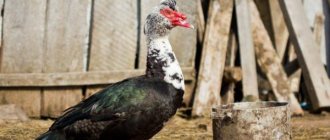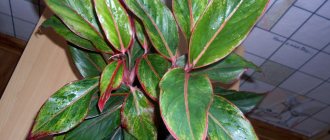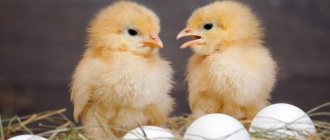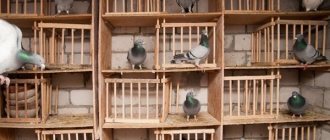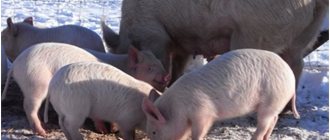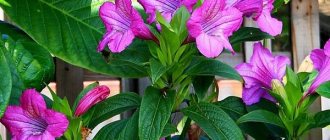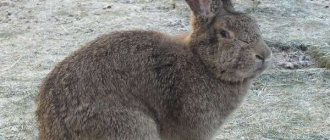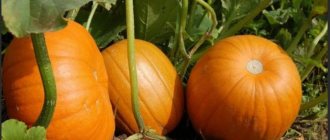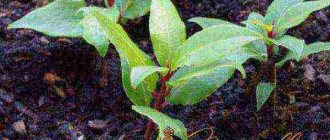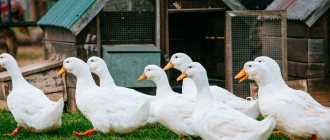How to keep ducks in winter
The Indo-duck is also called
the Muscovy duck .
The opinion that it is somehow connected with the turkey is erroneous. It developed because the bird has growths on its beak that are similar to those of turkeys. The bird got its name from the phrase “Indian duck,” as it came to our region from South America.
The duck is nicknamed the musky duck because it produces a persistent musky odor . She became popular due to her calm and easy-going character. The bird is not at all aggressive, it screams very rarely. It is easy to care for, its meat and eggs have excellent taste and have high dietary properties.
To keep a Muscovy duck at home, you do not need to graduate from the academy. It is enough to get good advice from a specialist, read the necessary material on the Internet, and even a novice poultry farmer will succeed, the main thing is desire and aspiration.
Feeding
The feeding diet of turkey ducks in winter must necessarily contain grain crops such as:
- barley;
- wheat;
- oats;
- corn;
- millet.
It is recommended to feed turkey ducks with grain crops twice a day in the winter, morning and evening, on the basis that one bird per day should consume at least 350 grams of dry food.
During the day, it is recommended to feed turkey ducks at home during the winter period with wet mash consisting of raw vegetable crops, in the form of chopped pumpkin, cabbage, fodder beets and carrots. It wouldn’t hurt to add boiled tubers or potato peelings to the mash.
To increase the biological value of the diet of Indian ducks, steamed hay flour can be added to the dinner mash. And adding meat and bone and fish meal will help enrich the diet with easily digestible proteins. It is recommended to add salt to the prepared mash at the rate of 1 gram of salt per head of bird.
It should also be noted that the winter diet of musk ducks should include mineral supplements in the form of:
- shells;
- chalk;
- eggshell.
In the morning, Indian ducks can be given food scraps from the table, but they should not be sour. There should be constant water in the drinking bowls, and the water should be changed and the drinking bowls should be washed every 2 days.
Description of the breed
Along with its nondescript relatives, the Muscovy duck is very expressive.
In addition to the variety of colors, it is endowed with a “turkey” growth on its beak - which makes it unique and attractive.
We also recommend reading:
Don’t feed the ducks - they have yet to fly... Gray duck: description of the bird, reproduction, nutrition Duck breeds for home breeding Mulard ducks: raising at home, description of the breed, reviews
The Indian duck is a large, strong bird, with a broad chest and strong short legs. Its body is squat, elongated, on it you can see powerful feathered wings, a thick short neck, at the end of which there is a large head. The weight of an adult drake reaches an average of 6 kg, the female will be smaller, weighing up to 3.5 kg.
The bird is calm and not noisy , and rarely gets into fights with each other. Conflicts with other bird breeds are possible. If we compare all types of waterfowl, the Indian duck can easily do without a pond without feeling any discomfort.
The Muscovy duck has good health and immunity, it practically does not get sick and does not need special vaccinations. If problems arise with her health, this can only be due to improper maintenance or a cold duckling.
Advantages:
- unpretentious to food;
- consume little feed, especially in the summer;
- it is not necessary to have a body of water;
- The bird is calm, not noisy.
Flaws:
- needs a spacious room;
- in winter the room must be heated;
- do not tolerate humidity, dampness and drafts;
- The fattening time is quite long - more than 2 months.
Content
In general, keeping ducks in the winter does not create much trouble for breeders, although there are some features compared to the summer period. In summer, birds feed mainly on pasture, spending most of their time walking. During the cold season, you need to take care of proper feeding, a warm and dry house and, of course, a place for walking.
On the street
Despite the fact that ducks are hardy birds, feeding exclusively outside in winter is impossible. The point is in the structure of the paws, namely in the excess of blood vessels and the absence of a fat layer that would protect them. Thus, the vulnerable part of the bird's body is the paws, and most of the time the individual should be kept warm in a barn or greenhouse.
In the greenhouse
To keep ducks in a greenhouse, it is pre-equipped with everything necessary. An important feature of a greenhouse for birds is good lighting. It should retain heat well so that the average temperature does not fall below +5 degrees, but also does not rise above +12 degrees. A polycarbonate greenhouse is suitable for this.
In the barn
Keeping ducks in a barn is practically no different from a greenhouse. The barn is insulated outside and inside, the floor is raised 20-30 cm above the ground. This will prevent small rodents from getting to the birds. The floor is covered with hay, peat or sawdust. You will need nests, drinkers, feeders and perches.
Important conditions for keeping birds are cleanliness and dryness, otherwise the bird may get sick and die. The feeder and drinker are installed at a shallow depth so that the duck does not climb into them and dirty the water and food. It is important to monitor the water - it must be clean, fresh, not frozen. To avoid contamination of certain areas of the house, the feeder is periodically moved around the house.
Duck keeping room
The room where the Indian ducks will live
should be warmer than in a regular chicken coop .
Cages and lightweight summer houses are not suitable for them. If the barn is initially built for this bird, then the walls and floor need to be insulated so that the Indian ducks can live in it comfortably in winter. The ideal option for a duckling house is a log barn lined with brick on the outside. The construction is quite expensive, but you won’t build it every year - it’s worth it. But each owner has his own idea of a warm barn for poultry, so each person will build it in his own way, relying on his own financial capabilities.
A barn for indo-ducks should have not only warm walls, but also a floor. There must be a bedding on the floor; in addition, the main floor must be raised above the ground during construction. For insulation, you can use mineral wool or slag. Floors can be made of wood, covering them with linoleum on top. They can be made from adobe, but they are considered not very hygienic. If the shed has a concrete floor, then the thickness of the bedding should be significantly greater than on a wooden floor.
The thing is that there is no fat layer on the feet of musky ducks, but there is an extensive network of blood vessels. limbs turn out to be very sensitive and it is necessary that in cold weather they do not freeze. As soon as the feet of a South American duck freeze, the bird will die. This is the main problem that hinders the maintenance and breeding of Indian ducks in every yard. After all, not every owner can afford to insulate or heat a barn.
The walls also need to be insulated; they can simply be plastered. Indoors, the lower part of the wall - 80 cm from the floor, needs to be sheathed with plywood sheets or boards. You need to take care of ventilation - make a window and be sure to have a window in it. Insulate the frame around the perimeter to prevent drafts.
Before you start building a duckling house with your own hands, you need to take into account that for normal growth and development three individuals must have an area of 2 square meters, the height of the room itself must be human height - up to 2 meters.
Features of keeping birds
Each breed of duck differs in its demands on living conditions. Usually they are the same. There are minor deviations in temperature conditions. Decoy and musky ducks are considered the most capricious. For their winter maintenance it will be necessary to provide special conditions.
Indian girls
The Muscovy duck is popular in home breeding. The bird grows without obligatory access to a body of water, is quiet, and has excellent parental qualities. Gourmets love turkey due to its lack of fat. However, this indicator complicates the wintering of the bird. The lack of fat affects poor tolerance of cold weather. A duck gets frostbite on its feet the first time it comes into contact with snow or ice.
To keep turkey ducks in winter, you need a permanent barn and compliance with the following requirements:
- The walls are insulated to prevent freezing at extremely low temperatures. The presence of cracks and drafts is unacceptable.
- The floor is insulated as much as possible. If a concrete screed is provided, a wooden grate is laid on top. The floor is covered with a thick layer of litter. When the bottom layer of organic matter begins to rot from moisture, the generated heat will warm the birds’ paws.
- The ceiling height of the poultry house is from 2 m. Each individual is allocated 0.5 m2 of free space. Under cramped conditions, the development of ducks will slow down.
- For a herd of 12 heads, it is enough to arrange natural ventilation from plastic pipes. Air exchange strengthens the immune system. With an increased number of livestock, forced ventilation is installed.
- If ordinary ducks sleep on the floor, then Indian ducks need perches. They are made from small logs. The round timber is simply laid on the floor, creating an elevation. It is better to make nests with a roof in the form of a house. Hay or straw is placed inside.
- The drinking bowls are of a closed type. The equipment will prevent ducks from splashing water. There is no need for dampness in winter.
- The temperature inside the barn is maintained at least +12°C. Heating is carried out with lamps and fireproof electric heaters.
Advice! For heating and dim lighting during egg-laying, it is convenient to arrange lighting with blue lamps.
Ducks are allowed outside to roam in dry weather. The air temperature should not be lower than –3°C.
Decoy ducks
A special type of duck is kept by hunters. Females are used to attract drakes with vocal sounds. Usually a herd of 3-10 heads is left for wintering. Females and males are kept together and separated at the beginning of the mating season. Feeding is limited to prevent obesity. It is advisable to provide access to a reservoir. Females are released to swim as hunting season approaches.
What is needed to equip a poultry house?
Before letting a bird into the barn, make sure that it has everything for its normal maintenance:
- The feeder should be designed for 5–6 individuals. Its dimensions: length 1 meter, width – 25 cm, height – 10–12 cm.
- Drinkers can be of different sizes, but their depth cannot be less than 20 cm. It is advisable that they be closed so that the bird cannot bathe in drinking water. In a large poultry house there cannot be only one drinker.
- There must be perches in the barn. They need to be made with your own hands, using a wooden beam or log. They should be installed 40 cm from the walls; The height of the perch should be 20 cm, the width can be the same.
- Keeping turkey ducks in winter means having nests in the barn. They are wooden houses that have a roof and thresholds. There may be several such houses in a barn - it depends on the number of females. To make the house, plywood or planks are used, and inside the house there is a bedding made of straw or shavings. It is not recommended to use fine sawdust. The female will do further insulation of the nest herself.
To properly equip a house for musk ducks, you need to do everything according to the rules and use only high-quality material .
The building for keeping ducks in winter should please the owner, and the bird should feel comfortable and warm in it. There should be no drafts or dampness in the room, and frost can only be outside the window. At the time of egg laying, the room should not be particularly noisy. This fact must be taken into account if you introduce turkey ducks to another type of poultry. Houses for indo-ducks should be located to the side so that no one disturbs the females.
Wintering birds at home
To avoid loss of livestock, birds must be well prepared for wintering. This applies to all basic aspects, but the most important is the preparation of the room.
Shed or greenhouse
To care for turkey ducks during the colder months of the year, farmers use either a barn or a polycarbonate greenhouse. The farmer decides where the birds will winter on their own, but in any case the room should be heated.
The rest of the requirements are standard:
- Insulation. The walls of the barn are insulated with sheets of plywood. Options with polystyrene foam or mineral wool sheets are also being considered. The floor - preferably wooden - whether in a barn or in a greenhouse, it is recommended to raise it above ground level by 15 - 20 cm.
- Ventilation. A supply and exhaust system is installed in the room. If this is not possible, then a window with an opening window or transom is installed.
- Heating. With the arrival of frost, high-quality heating is organized. For this, a stationary brick oven and blue lamps are used. To prevent birds from being exposed to diseases and gaining weight, the required temperature is not lower than +12°C.
- Inner space. The poultry house contains feeders, drinking bowls with warm water, “nests” according to the number of females, and perches in the form of inverted boxes lying on the floor of logs.
- Laz. A hole measuring 40x40 cm is cut into the door for the free movement of birds. The hole is covered with thick fabric or is a small door on hinges.
Polycarbonate is an inherently dense material that can withstand wind pressure. But using a greenhouse as an option for keeping Indian ducks in the cold season is only allowed if frosts in the region do not exceed -15°C. If the temperature in a given area is below this indicator, then it is more prudent to keep the bird in a barn.
Floors
The floors in the wintering room for turkey ducks are arranged using different technologies. The following options are common:
- boardwalks;
- adobe;
- cement strainer.
Cemented floors are easiest to keep clean. They are easy to clean, but wood flooring is warmer. The choice depends on the preference of the farmer.
The floor, regardless of the chosen material, is insulated. This is a necessary necessity, since Indian ducks have very sensitive paws that are not protected by a fat layer. On cold surfaces they quickly freeze, causing the death of the bird. It is because of this feature that year-round keeping of musk ducks causes difficulties for farmers.
In the process of preparing the poultry house for wintering, the floor in the room is cleaned and dried. Then it is treated with fluff lime. A layer of dry straw, sawdust or shavings is placed on top.
The height of the litter should not be less than 5 cm, then it is easier to replace and remove.
In winter, the litter is not changed, but only a new layer is added. It itself is a source of additional heat. Its release occurs due to overheating of the lower layers. But the process is accompanied by the appearance of a strong specific odor, so the poultry house must be equipped with a ventilation system.
Room heating
Even an insulated barn needs additional heating in winter. It is recommended to use heating devices even when the air temperature drops to -5°C. Suitable for this purpose:
- heat fans;
- air heaters;
- electric fireplaces;
- potbelly stoves;
- electric lamps.
Experts advise heating the room by using blue lamps. This is the simplest but most effective option. The power of one is 50 W. For a medium-sized barn or greenhouse you will need up to 6 - 7 pieces. They are mounted on the ceiling and are additionally protected by a mesh cap.
If a stove, electric or gas appliances are used for heating, then a special fence is erected around it. This will help protect the birds from getting thermal burns.
Manhole equipment
In winter, it is not recommended to open the doors to the poultry house completely. To allow free access of the indo-ducks to the territory of the walking yard, a hole is cut in the main door, to the edge of which a wooden ladder is attached. Recommended dimensions are 40x40 cm, height from the floor surface is 20 - 30 cm. To prevent the penetration of icy air, the hole is covered with a thick dark cloth.
Repair features
The room in which the bird is kept must be warm. If possible, it should be plastered and whitewashed, and all cracks should be sealed with a mixture of clay and manure. Also, the cracks on the outside are sealed with polyurethane foam, and the inside is coated with tow.
If an old structure is adapted for a poultry house, then the debris is first cleaned out, and the cracks are sealed and disinfected.
Indians need fresh air
If there are less than 12 domestic ducks living in the house, then natural ventilation is used. Air change occurs due to the difference in temperature, air pressure inside and outside the room, and wind.
With a larger population, it is recommended to create a supply and exhaust ventilation system. The scheme for its manufacture is simple:
- Assemble a semi-closed box from the boards, measuring 22x22 cm.
- Divide it along the entire length with boards inserted crosswise in relation to each other into 4 parts.
- Cover the top of the box with a board.
- Drill holes on the sides with a diameter of 7 cm.
- Install the pipe. After installation, it should rise 60 cm above the roof of the poultry house.
The air flow occurs through two compartments, regardless of the wind direction. Thanks to the created pressure, contaminated air will be removed through the other two.
Below is a video that clearly describes what supply and exhaust ventilation is and how to assemble it correctly:
Heating a barn
Despite the fact that the barn was built in compliance with all technologies and recommendations, it
needs to be heated in winter .
In order not to lose the bird, you need to turn on the heating devices already at 5 degrees below zero. Heaters, electric fireplaces, fan heaters, electric lamps or potbelly stoves are suitable as heating devices. Experts recommend using the simplest heating method for heating a barn - blue lamps. The power of one is 50 W; for a medium-sized shed you will need 6–7 pieces. They are installed on the ceiling and covered with a protective cap made of mesh.
In winter, in the barn where musk ducks live, the temperature should be at least 12 degrees Celsius. The room must be ventilated daily to avoid stale air.
In the summer, the bird does not need to be kept in a permanent barn; a simple plank or collapsible barn will suit it. Indian ducks do not like heat.
Indo-duck nutrition in winter
A balanced daily diet for birds is one of the main criteria for their successful growth and productivity, so the main food for them is grain. It should make up the majority of your daily diet. Each head receives up to 350 g of such food per day. In winter, food remains the same.
Indian ducks are unpretentious in food and eat any grain crops, but you should not give them fresh barley: it has a bad effect on the health of the birds and can even lead to their death. It only becomes safe when soaked.
Wet food is also necessary in winter. Muscovy ducks willingly eat mash from a large number of products:
Birds also need vitamins and minerals in winter. Most of them are found in vegetables:
Potatoes should also be added to the mash, but only in boiled form. Experienced farmers recommend adding natural minerals to the daily menu of birds:
You can learn how to make such mashes by watching video materials on keeping such birds. The low air temperature in the pen or greenhouse where Muscovy ducks are kept requires the farmer to frequently change the water. To prevent birds from catching a cold, you should ensure that the water is always at least 19°C. Problems with solving these issues may not arise if the air temperature in the main place where they are kept is at room temperature.
Bird walking
Like any domestic animal, the Indian duck loves to walk. If this is very easy to do in the summer, then in winter it is a little more difficult, because the bird has very sensitive limbs.
To arrange a walk for birds in winter, you need to make a fenced run or aviary with your own hands . You cannot save on the fence, since the bird can fly well - its height must be at least 2 meters. Before letting the bird out for a walk, you need to clear this fenced exercise yard of snow and cover it with warm bedding. You can use a thick layer of sand or sawdust as bedding. Straw will also work, making a warm carpet that will absorb all excess moisture over time.
According to all the rules, the run should be built on the south side of the poultry house, protected from the wind and covered with a canopy from precipitation. When the bird is walking, feeders and boxes of ash for baths are brought into the yard. Swimming in winter is strictly contraindicated for this bird, so all passages to water bodies must be blocked. Bird walking is stopped if the outside temperature is below 10 degrees below zero.
It will be expensive and difficult only at first, when you need to create all the conditions, make buildings and nests, walk, buy material for bedding. When all this is done and equipped, it will only be necessary over time to improve everything.
The female, during a cycle, can lay up to 100 eggs , each weighing approximately 75 grams. During the period from spring to autumn, females, under normal conditions, can breed 2–3 broods of 16 babies on average. These figures indicate that breeding and rearing of indo-ducks is very productive. If you feed them normally and create good conditions, the population will replenish very quickly. To feed your family, you can regularly slaughter ducks.
Is it possible to keep animals in a greenhouse in winter?
As practice has shown, a greenhouse is excellent for keeping poultry. However, you cannot simply move animals from a summer poultry house to a greenhouse. In order for the birds to overwinter without stress and loss, care will have to be taken to create favorable conditions in the structure.
Did you know? Domestic chickens are descendants of the Tyrannosaurus rex, one of the largest predators that ever lived on Earth.
If we talk about the feasibility of relocating birds to a greenhouse, then an undeniable advantage is the significant savings in space and financial resources, as well as the simplification of labor. The greenhouse perfectly protects birds from winter weather, off-season rains and predators. Greenhouse conditions make it possible to preserve the livestock and bring out new young animals by spring.
Feeding the bird
Rapid growth and strong immunity are possible only when the bird is properly fed and cared for.
Since poultry are constantly outdoors in the summer, feed consumption during this period is significantly reduced. She nibbles grass, finds worms and insects - this is how her body receives all the nutrients, vitamins and minerals it needs.
The bird feeds on crushed grain, silage or grass, vegetables and animal feed . It is necessary to provide it with mineral and vitamin supplements, fish or meat and bone meal. There should be a special feeder in the barn containing chalk, fine shells, gravel or sand.
The drinking bowl should always be filled with water. It needs to be washed and the water changed regularly. If there are a lot of birds, there should not be one drinking bowl.
Proper nutrition
You definitely need to think about what to feed your ducks in winter. In general, no major dietary adjustments will be required. The main thing in the diet is grain, and at any time of the year. A bird will eat approximately 350 g of feed per day. Indo-ducks are very fond of oats, wheat and other grains. But barley is not recommended to be added to their diet, as it can harm the health of birds of this breed. But if you still have to give it to Indian ducks, then you need to first soak the grains in warm water and wait about a couple of hours. In winter, grain will maintain the required muscle mass of the individual.
In addition, in winter it is not recommended to give them wet mash. It is best to prepare mixtures of bran, barley and grass-fed flour. Feeding requires the presence of vegetables in the diet. For example, carrots, beets, cabbage are suitable. Thanks to them, the birds’ body will compensate for the lack of vitamins. As for potatoes, they must be boiled.
Drinkers should always be filled with water, and the liquid should be changed regularly to keep it fresh and clean. It must be taken into account that drinking bowls can cool quickly in winter, so you need to ensure that the liquid in it is not excessively cold. Otherwise, the birds may get sick, even though they are resistant to various diseases. It is recommended to heat the drinking bowls whenever possible.
Experts advise adding special vitamin and mineral complexes to your pet’s diet in winter. This will not only stimulate the growth of the bird, but also strengthen its immunity. In addition, indo-ducks should have access to mineral-type feed. For example, you need to make containers with chalk, crushed eggshells, and shells. You can leave table salt, but there should also be drinking bowls nearby. There must be separate containers for such food: it cannot be mixed with other bird food.
Before purchasing musk ducks for breeding, you need to learn how to keep them properly in the winter. You definitely need to take care of the chicken coop: equip it, make perches, lighting, insulation, etc. Good nutrition in winter is also important. In addition, you should consider an aviary for walking such birds.
Useful tips
- To properly make a concrete floor in a barn in which indo-ducks will be kept, you need to follow a special technology . First pour 15 cm of soil to raise the surface, and 10 cm of crushed stone onto the ground. The surface is thoroughly compacted and then covered with solution.
- The number of nests in the barn should correspond to the number of females. Each female must have her own place to lay eggs.
- The bird is so quiet that you can easily keep it in your dacha - the neighbors won’t complain.
- If you approach the breeding of Indian ducks correctly, then your mini-farm can soon turn into a large farm with a stable income.
- You need to feed the bird a variety of foods, then it will thank you for its high egg production.
- An important fact is that Indian ducks can hatch their offspring themselves. There is no need to purchase such an expensive incubator specifically for them.
Winter diet
A balanced feed ration, in which the main share is the grain component, helps keep ducks healthy in winter. Every day, each bird during the cold season requires up to 350 g of grain. At the same time, they eat any variety of grains, with the exception of fresh barley, which adversely affects their condition.
The wet food ducks need in winter is a mixture of a large number of products: barley, wheat bran, cottage cheese and vegetables.
For better digestibility, barley is pre-soaked in water when fed to ducks.
During the winter season, poultry diversify their diet:
- wet mash consisting of bran, grass (in winter it can be replaced with hay), curd mass;
- vegetable dishes that provide vitamins, including carrots, beets, cabbage leaves, zucchini and pumpkins, it is permissible to add boiled potatoes;
- mineral supplements, including table salt, shell rock, egg shells and chalk.
It is important to provide the livestock with an increased amount of feed, because In cold conditions, most of the birds' energy is spent on staying warm. The average amount of feed given per individual is 0.5 kg. The amount of drinking water at room temperature per head is 1 liter. Compared to the summer period, when the number of feedings is limited to 2, the frequency of feedings in the cold season is increased to 4 times a day. When feeding in winter, wet mash is heated.
In closed conditions, place 1 feeder for 5 individuals. The length of the feeder is from 0.6 m.
Recently, breeding indo-ducks, which are also called musk ducks, has become extremely popular among farms and poultry farmers. Indian ducks have gained such wide appreciation due to the fact that their meat is very tasty, dietary and easily digestible by the human body. At the same time, the nutritional value of eggs is also of high quality. They are unpretentious in care, but they have some differences and features of their proper maintenance in winter at home.
The main task is to ensure optimal temperatures in the nesting barn, where these birds will spend the winter. It is important to know that they can walk outside even in cold weather; the main thing is to create all the conditions for keeping Indian ducks in winter, which must meet certain standards.
Domestic ducks
The duck is one of the first wild birds to be domesticated by humans. Duck breeding is still relevant today. Poultry ranks second in terms of food production for households. Ducks are very popular in Russia; they can be found in every second household. This is due to rapid weight gain - young animals of some breeds already gain 2–2.5 kg at 1.5 months. In addition, one bird can produce 120–200 eggs per year. They are not as tasty as chicken and are mostly used for breeding.
Domestic ducks near the feeder
The domestic duck differs from the wild one primarily in its larger size and weight.
- body – elongated with a wide, convex chest;
- the head is large with a long, flattened beak;
- legs – short, webbed feet;
- color - beak and paws - yellowish-orange. Plumage - depending on the breed: Peking - white, Mallard - gray-brown, Bashkir - khaki.
- sexual maturity occurs at 25–28 days;
- egg production – up to 220 eggs;
- weight – drake – up to 4 kg, duck – up to 3.7 kg;
- the incubation period of the egg is 27–28 days;
- slaughtering is best done before juvenile molting - 50–70 days, then the quality of the meat deteriorates.
